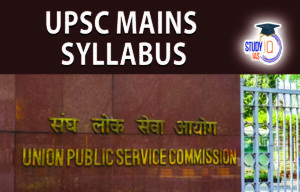Q2. What is the status of digitalization in the Indian economy? Examine the problems faced in this regard and suggest improvements. (10m) – Economy
Introduction
The Digital India program launched in 2015 brought significant improvements in technology infrastructure that have enhanced social equality, employment opportunities, and digital literacy for all. Nearly two-thirds of the Indian population use the Internet regularly ‒ with millions of connections made through the immediate convenience of a mobile device.
Current status of digitalization in the Indian economy:
- Digital Consumer Market: India is one of the largest and fastest-growing markets for digital consumers, with 560 million internet subscribers in 2018, second only to China. This indicates a substantial base of potential users for digital services and products.
- Telecommunications Growth: Competitive offerings by telecommunications firms have led to a surge in internet subscriptions and data consumption, quadrupling in 2017 and 2018. This has improved internet accessibility for many.
- Economic Impact: Digitalization has had a significant economic impact in India. The core digital economy’s contribution to Gross Value Added (GVA) increased from 5.4% in 2014 to 8.5% in 2019. The digitally dependent economy accounted for an estimated 22% of India’s GDP in 2019, with a growth rate outpacing the overall economy. The digital output multiplier also increased, indicating the positive effect of investments.
- Government Digitalization: The Indian government has been actively digitizing its services, making it easier for citizens to access licenses, certificates, and pay taxes. Platforms like the Government eMarketplace (GeM) have streamlined procurement processes. Additionally, during the pandemic, the government used digital infrastructure, such as the CoWIN platform, for the world’s largest vaccination program.
- Broadband and Internet Usage: India has witnessed a surge in broadband usage, with mobile broadband subscribers reaching 765 million by 2021. Data traffic per user has increased significantly, and Gen Z spends an average of 8 hours per day online. The rural population is also adopting smartphones, contributing to expectations of India having one of the world’s largest online shopper populations by 2030.
- E-commerce Growth: Online marketplaces have been growing rapidly across various sectors of the economy. The e-commerce market is projected to reach $350 billion by 2030, reflecting changing consumer behavior and increasing digitalization.
Problems Faced in Digitalization:
- Digital Divide: Despite the impressive numbers, the digital divide remains a significant challenge. Only about 40 percent of the population has an internet subscription, indicating that a substantial portion of the population still lacks access to the digital economy.
- Data Privacy and Security: Concerns about data privacy and security remain. Data breaches and cyberattacks are becoming more common, and there is a need for robust cybersecurity measures.
- Regulatory Challenges: The regulatory environment for digital businesses can be complex and uncertain. Clear and consistent regulations are needed to foster innovation while ensuring consumer protection.
- Infrastructure Bottlenecks: Despite progress, India’s digital infrastructure, including internet connectivity and network speeds, needs further improvement to support the growing demand for online services.
Suggestions for Improvement:
- Digital Literacy Programs: The government and private sector should invest in digital literacy programs, especially in rural areas, to bridge the digital divide. These programs can empower people with the skills needed to access and utilise digital services effectively.
- Cybersecurity Measures: Strengthening cybersecurity infrastructure and promoting cybersecurity awareness is crucial. Both businesses and individuals should be educated about best practices to protect their digital assets.
- Simplified Regulations: The government should work towards creating a clear and predictable regulatory environment for digital businesses, fostering innovation while ensuring consumer protection.
- Infrastructure Investment: Continued investment in digital infrastructure, including broadband expansion and 5G rollout, is essential to support the growing demand for online services.
- Innovation Support: Support for fintech and tech startups should continue through initiatives like incubators, accelerators, and funding programs to drive innovation in the digital space.
- Data Protection Laws: Strengthen data protection laws and regulations to ensure that user data is handled responsibly and securely by businesses and service providers.
Digitalization is a complex and ongoing process, and addressing these issues requires collaboration between the government, private sector, and civil society to ensure that the benefits of digitalization reach all segments of the Indian population.
Check out the UPSC Mains GS Paper 3 2023 Analysis with detailed expatiation of the topics of Mains GS Paper 3 By the Study IQ Experts


 NCERT Books for UPSC Preparation, Check ...
NCERT Books for UPSC Preparation, Check ...
 UPSC Syllabus 2025, Check UPSC CSE Sylla...
UPSC Syllabus 2025, Check UPSC CSE Sylla...
 UPSC Mains Syllabus 2025, Optional Sylla...
UPSC Mains Syllabus 2025, Optional Sylla...





















